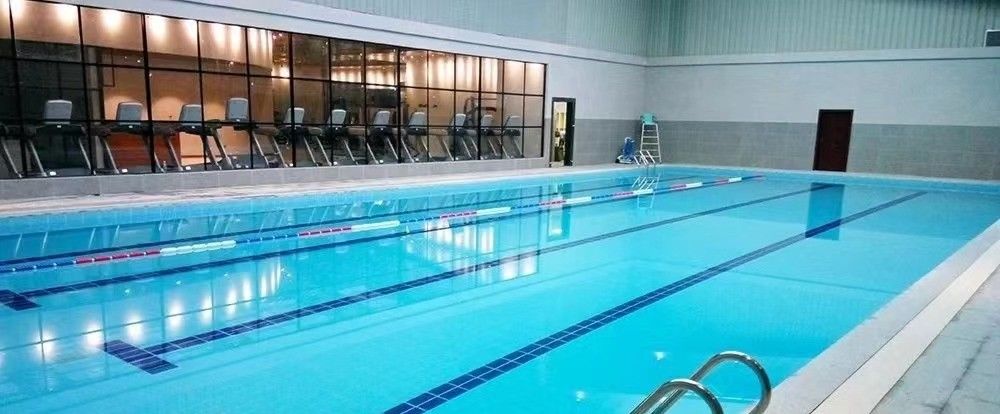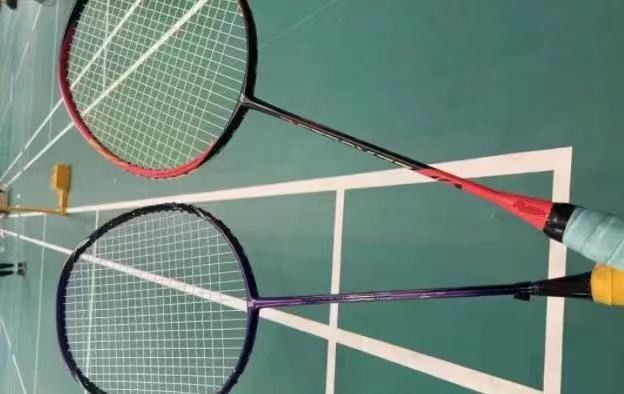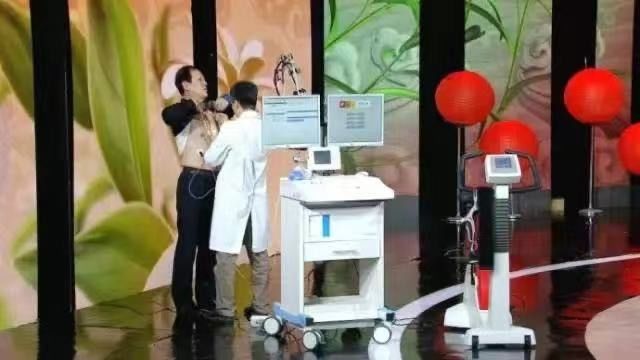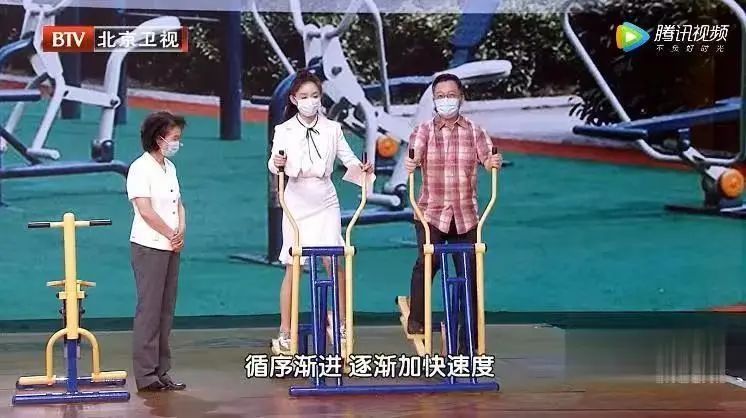Scientific and reasonable exercise has many benefits for the body – it can help us strengthen bones, muscles, and flexible joints, and can also promote blood circulation in the body, improve lung capacity, and effectively enhance immunity.
However, when people get old, the tissues and organs of the whole body will obviously decline. In addition, there are more or less chronic diseases on the body, such as high blood pressure, gout, arthritis, etc., so people will not dare to exercise, for fear of injury Joints, falls, stimulate blood pressure, etc.
To fight aging, exercise is essential. So, how to avoid injury when exercising for the elderly? Which sport is more suitable to choose?
1
Recommended exercise for the elderly
Longevity and disease prevention
1 brisk walk, strengthen the heart and lungs
Brisk walking is one of the easiest and gentlest cardio workouts. Putting on sneakers, you can go out for a quick walk without any special equipment, especially suitable for obese, middle-aged and elderly people, knee injuries, pregnant women and other groups.
Insisting on brisk walking can enhance myocardial contractility and exercise cardiopulmonary function; it can also help the body maintain bone mass, enhance muscle strength, improve joint stability, and achieve the purpose of preventing osteoporosis; it also promotes blood circulation and helps prevent Cardiovascular disease…
A study from the University Hospital of Saint-Etienne in France found that older adults who persisted in brisk walking for 15 minutes a day could reduce their risk of premature death by 22 percent.

Note: Brisk walking, also known as brisk walking, is distinct from walking and slow walking.
The standard for brisk walking is to walk about 1 kilometer every 10 minutes, with an average of 120-140 steps per minute; the heart rate is generally 100-140 beats/min; at the same time, keep your head up and your arms out.
2 swimming, coordinate the muscles of the whole body, enhance bone density
Swimming can significantly improve the cardiopulmonary function, and it can also exercise the muscles of the shoulders, back, waist, abdomen and legs, especially to enhance muscle strength and coordination. Great for people with knee problems and overweight.
The University of Edinburgh in the United Kingdom tracked more than 80,000 people for 10 years and found that regular swimming can reduce the risk of premature death by 28%; and those who swim regularly reduce the risk of dying from stroke or heart disease by 41%.

Note: Before swimming, be sure to warm up, use 10 to 20 minutes, do some stretching and jumping movements to wake up the muscles to prevent cramps in the water; the longer the swimming time, the better, it is recommended to stick to it 3 times a week. The next swim is 1000~1500 meters, and the heart rate is controlled at about 150 beats/min.
Three swings to protect blood vessels
Including tennis, badminton, table tennis, etc. A study published in The Lancet pointed out that racket swings, including tennis, badminton, and table tennis, were the most cost-effective sports, followed by swimming and aerobics.
Swing was associated with a 47% lower risk of all-cause mortality and a 56% lower risk of cardiovascular death.

In the process of swinging, our shoulder muscles, arms biceps and triceps can all be exercised and strengthened; swinging sports also need to move quickly, back and forth, the coordination of the body also continuously improved.
In addition, the eyes need to keep turning with the flying ball, which not only improves the visual acuity, but also trains the brain.
Note: The playing field should be flat and free of obstacles, and pay attention to the surroundings; be sure to warm up before exercising, especially to relax the neck, shoulder and back muscles; in addition, if you play for fitness, you should play more defense and less smash , not to be too aggressive to save the ball, so as not to cause damage.

4 Tai Chi, improve body balance
Although Tai Chi is a martial art, it also occupies a very important position in traditional Chinese health science. Tai Chi makes the body reach the balance of yin and yang through a series of adjustments such as adjusting the heart, adjusting the qi, and adjusting the body. Specifically, it has the following effects:
① Regular practice of Tai Chi can improve body balance, strengthen leg muscles, and prevent falls. Several studies have found that practicing Tai Chi for 1 year can reduce the risk of falls by 43%.
②The research data from the Mayo Clinic in the United States shows that regular Tai Chi practice can reduce anxiety and depression, regulate emotions, relieve stress, and effectively improve the sleep quality of middle-aged and elderly people.
③Practicing Tai Chi requires Qi to sink into Dantian. During abdominal breathing, the diaphragm and abdominal muscles contract and relax to promote blood circulation, which is also good for preventing cardiovascular disease.

2
To avoid sports injuries
Need to master these details
1 Check before exercise
Some middle-aged and elderly people with underlying diseases should have a physical examination before exercising. Scientific data can help better choose sports and master the intensity of exercise;
At the same time, these test results can also be used as objective indicators before exercising. After a period of exercise, perform a physical examination again to compare the previous data to check the effect of exercise.

2 Movementspre-test
Before you start exercising, you can squat 10-20 times in a row, or run in place for 15 seconds. If there are no symptoms such as palpitations, shortness of breath, chest tightness, etc., it means that your physical condition is not bad and you can start exercising.
3 Do not exercise on an empty stomach
Older people wake up earlier in the morning, and some people are used to buying breakfast after going out for exercise. But fasting exercise is very dangerous, it may lead to high blood pressure, low blood sugar, chest tightness, dizziness, weak legs, and even accidental coma.
It is recommended to eat breakfast and rest for a while before going out to exercise.

Choose a pair of comfortable shoes
To choose running shoes suitable for sports, do not wear slippers, leather shoes, cloth shoes for sports.
A comfortable pair of shoes can protect your ankle and cushion your joints. Elderly people can also wear waist packs and wrist guards, and they can also carry emergency medicine with them if needed.
5 must be warmed up before exercise
Stretch sufficiently before exercise to allow your body to adapt to the feeling of increased blood flow and muscle extension, and then gradually increase the intensity of exercise. After training, you should also do sufficient stretching to recover.
This avoids physical discomfort caused by sudden movement or sudden stillness.

6 control exercise time
Although exercise is good, it is necessary to control the time well. It is not the longer the better. Especially when the weather is hot or cold, long-term outdoor sports may cause accidents such as heat stroke and frostbite.
It is recommended to exercise 45-60 minutes each time, 3-5 days a week. When exercising, you feel your body is hot, sweating slightly, your heart rate is ideal, you feel relaxed and comfortable after exercise, and your appetite and sleep are not affected, indicating that the intensity and amount of exercise are appropriate.

7 sports should be diversified
Exercise for the elderly is not only physical exercise, but also mental and value training. It should be flexible and changeable and alternate in various ways to prevent excessive damage to a certain joint. For example, after running, you can also perform yoga and Tai Chi, so that every part of the body can be exercised. This method is more reasonable.
(I am the official WeChat account of a big doctor)